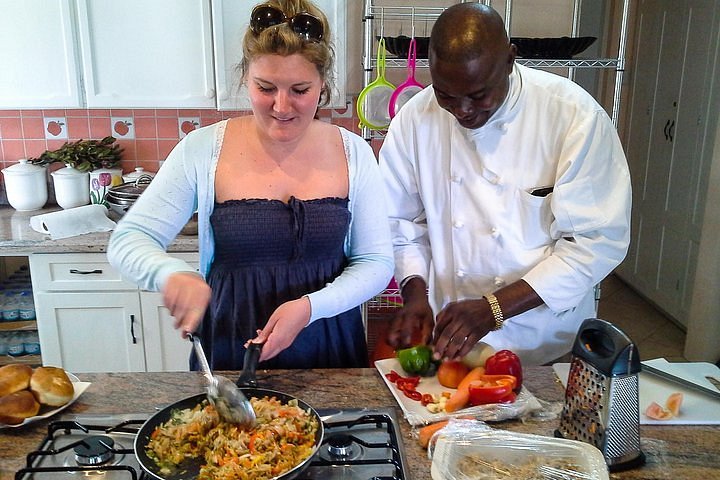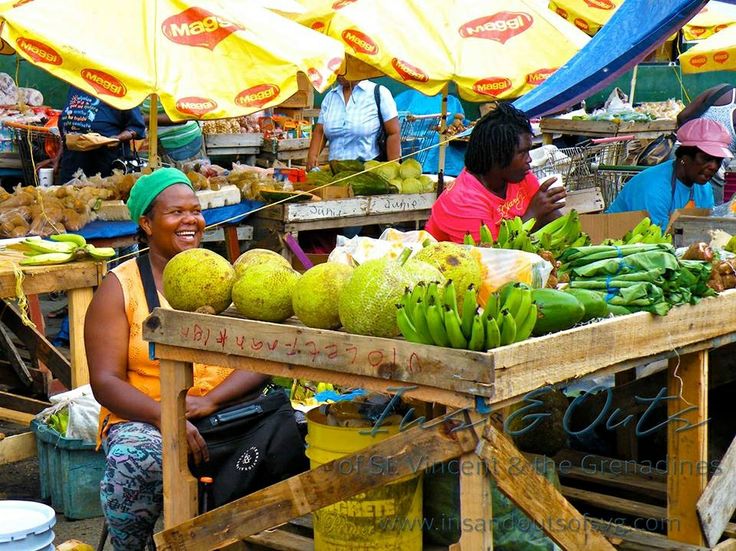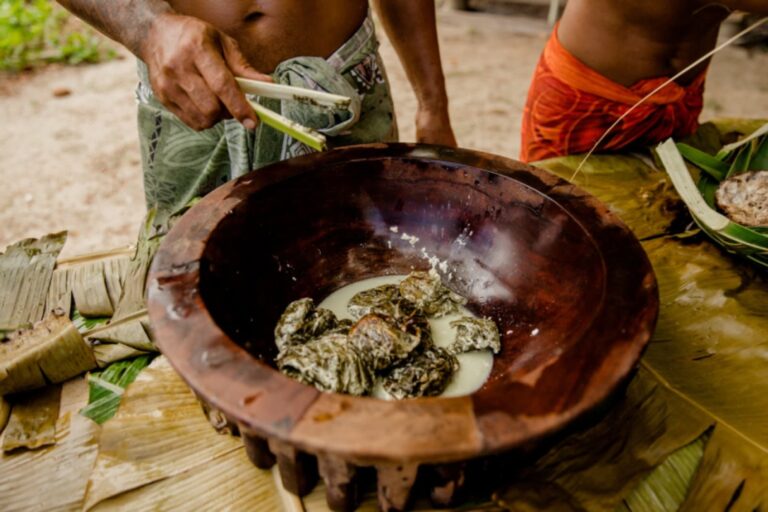Introduction: The Melting Pot of Saint Kitts and Nevis Cuisine
Saint Kitts and Nevis is a small island nation in the Caribbean, with a population of just over 50,000 people. Due to its history of colonization and slavery, Saint Kitts and Nevis has a rich culinary heritage that combines African, British, and French influences. The island’s cuisine features a variety of spices, seafood, and tropical fruits, which are used to create unique and flavorful dishes.
African Influences: The Roots of Saint Kitts and Nevis Dishes
African cuisine has had a significant impact on the food culture of Saint Kitts and Nevis. The island’s slaves were primarily brought from West and Central Africa, and they brought with them their traditional cooking techniques and ingredients. African influences can be seen in dishes like goat water, a spicy stew made with goat meat, breadfruit, and spices, and pelau, a rice and chicken dish that is similar to jollof rice, a popular West African dish.
African ingredients like okra, callaloo, and cassava are also commonly used in Saint Kitts and Nevis cuisine. These ingredients are used to make dishes like callaloo soup, a hearty soup made with leafy greens and coconut milk, and sweet potato pudding, a dessert made with cassava, sweet potato, and coconut milk.
British Influences: The Colonial Era in Saint Kitts and Nevis Cuisine
Saint Kitts and Nevis was colonized by the British in the 17th century, and British cuisine has had a lasting impact on the island’s food culture. The British brought with them ingredients like salted cod, which is used in dishes like saltfish and johnnycakes, a popular breakfast dish. The island’s love of tea also reflects its British heritage, and tea is a staple beverage in many households.
One of the most famous British-influenced dishes in Saint Kitts and Nevis is the national dish, stewed saltfish with spiced plantains. This dish features salted cod that is stewed with onions, tomatoes, and spices, and is served with fried plantains or breadfruit.
French Influences: A Touch of Elegance in Saint Kitts and Nevis Food
The French also had a significant impact on the food culture of Saint Kitts and Nevis. The island was briefly occupied by the French in the 18th century, and French cuisine has had a lasting impact on the island’s culinary traditions. French influences can be seen in dishes like conch fritters, a popular appetizer made with conch meat, and coconut sugar cakes, a sweet treat made from coconut milk and sugar.
French techniques like baking and pastry-making are also prevalent in Saint Kitts and Nevis cuisine. Pâtés, small savory pastries filled with meat or vegetables, are a common snack food on the island. French-inspired desserts like tarts and crepes are also popular.
Fusion Cuisine: How Saint Kitts and Nevis Blends Its Culinary Traditions
Saint Kitts and Nevis cuisine is a unique blend of African, British, and French influences. While each influence has its own distinct characteristics, they have also blended together to create something new and exciting. The island’s fusion cuisine can be seen in dishes like curry goat, which combines African spices with Indian curry techniques, and coconut drops, a sweet snack made with coconut, ginger, and sugar.
Fusion cuisine in Saint Kitts and Nevis is also influenced by the island’s proximity to other Caribbean nations. Jamaican and Trinidadian cuisine have also had an impact on the island’s food culture, resulting in dishes like jerk chicken and doubles, a popular Trinidadian street food.
Conclusion: Saint Kitts and Nevis Cuisine – A Unique Culinary Experience
Saint Kitts and Nevis cuisine is a unique culinary experience that reflects the island’s rich history and cultural heritage. African, British, and French influences have blended together to create something new and exciting, while the island’s fusion cuisine showcases its proximity to other Caribbean nations. Whether you’re trying traditional dishes like pelau or discovering new favorites like conch fritters, Saint Kitts and Nevis cuisine is sure to delight your taste buds.










